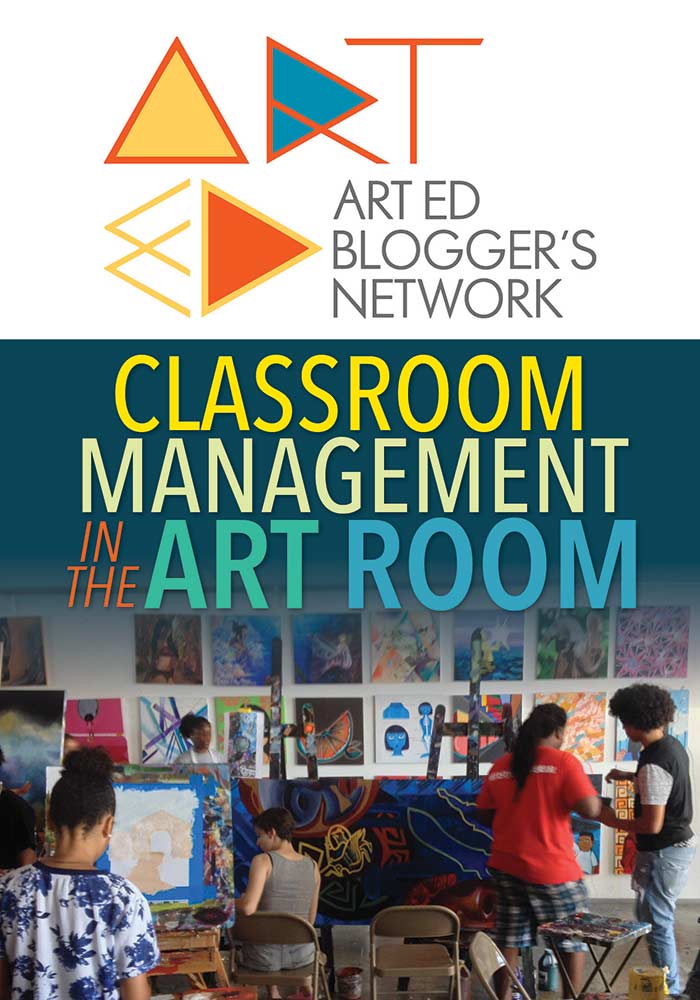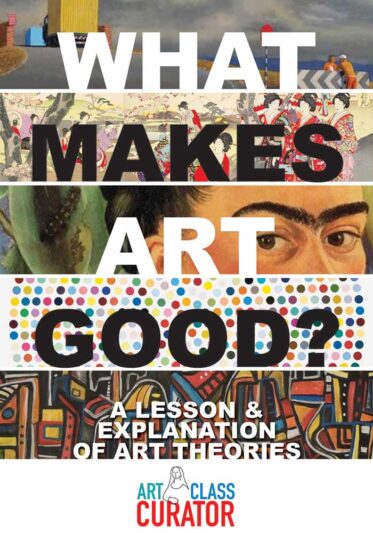Inside: Tips for avoiding classroom management problems by creating a culture of trust and respect.

Whether you’ve been teaching for a year or a decade, you’ve no doubt learned the importance of avoiding classroom management problems. When a student doesn’t behave, it can keep the whole class from learning, and it doesn’t take long for one misbehaving student to become a whole class problem. That’s why it’s so important to establish expectations from day one and enforce them all year long.
This post was inspired by my conversation with classroom management guru Michael Linsin on the Art Class Curator Podcast. Listen to our conversation at this link or wherever you listen to podcasts.
Protect the Learning
We have a lot of goals as teachers–teach exciting lessons, mold students into thoughtful citizens, and widen their world with knowledge and learning experiences. Disruptions in the classroom do more than stress you out, they rob the students of the opportunity to learn and keep you from being the best teacher you can be.
Every peaceful classroom is built on a foundation of trust and respect that flows from both the students and the teacher. When we start with trust and respect, students are free to learn and we are free to teach.
A well-run classroom doesn’t require an iron grip. Dictatorships can be effective, but they’re not fun for anyone. Avoiding classroom management problems is vital to enjoying the day-to-day. The best way to protect the learning and the fun is to establish a culture of respect and trust, and you can do that with a promise.
Classroom Promises
Classroom management problems start when students don’t know what to expect. How do they know what to expect? You tell them. And then, you show them.
Telling Them What to Expect
Whether you realize it or not, when you tell your students what the classroom rules and consequences are, you are making them a promise. They are hearing what you want from them and what will happen if they do not deliver.
What behavioral issues do you usually face? What problems only come up every once in a while? Write them all down and use that as a guide to create your rules. You want to cover every possibility. Have clear consequences that you are comfortable enforcing every single time. Consistency matters more than what the actual consequence is. Remember, you’re making a promise. To keep their trust and respect, you have to keep your promise.
After you’ve thought about what you will require from them, consider what you will give to them and why it’s valuable. This is the second part of your promise.
Ideally, you’ll introduce your classroom promises the first time you meet your students. Here’s an example:
As your teacher, I promise to respect you and give you a classroom free from distraction and drama. I promise not to yell at you or belittle you. As a class, we promise to respect one another and our time so that we can learn and explore together.
A promise is a bond. It holds both you and your students responsible. You promised, so you have to follow through. They promised, so they know they have noone to blame but themselves when they break a rule. Putting it front and center from day one creates a culture of accountability that will strengthen every time you enforce the rules.
Showing Them What to Expect
It’s easy to stand in front of your class and say that you expect a distraction-free classroom, but what you consider a distraction is not likely to be shared by all of your students. This is where your list of rules comes in handy. Without a doubt, every classroom needs a rule restricting excessive noise. Kids are creative. They can make noise a LOT of different ways. You can’t list every single possible item that can be used to create excessive noise, but you need them to know the expectations. So, show them!
Have a student act as the teacher while you take on the role of a student. While they’re doing their best impression of you, start making noise.
Crunch a water bottle.
Tap the desk with the tip of a pen.
Whisper to someone nearby.
Interrupt!
Model all the behaviors, big and small, that are against the rules. Don’t be afraid to go a little over the top. Embrace the humor of the situation. You want to make an impression.
After that, model what good behavior looks like. Then, let all the students have a turn! Break them into groups or let the whole class act out what rule-breaking and rule-following looks like. Another benefit of this is giving the students an opportunity to self-reflect and see what their behavior looks like to those around them. You’re not only showing them how to act in your class, you’re teaching them how to be more thoughtful in their interactions with others.
Finally, go over the consequences in detail. Show them what an eye-contact warning looks like, what a verbal warning sounds like, and so on.
When the rules are defined and made clear with examples, the students know exactly what to expect. They know they did wrong, so the blame is not on you, it’s on them for breaking the rule.
Review the Rules
Art teachers have less time with students, so it’s even more critical to spend a few minutes of each class for the first few weeks of school going over the rules. Short rule reviews allow you to get more in-depth as you get to know the quirks of each class.
Do a monthly check-in and consider if there’s any specific rules you need to review with any of your classes. Even if things are going well, review the rules with your students periodically, such as after long holidays or at the beginning of a new grading period.
Life happens. When you’re stressed, things can start to slide. A rule review is a good way to reset expectations or renew your promises.

Shift the Focus
One of the biggest classroom management problems is a student thinking the teacher is being unfair when they get in trouble for breaking a rule. That’s why making classroom promises and creating a culture of trust and respect is so important–you’re taking the focus off of you as the rule enforcer and redirecting it to their behavior and how it violates the promise.
When you immediately and consistently follow your rules and consequences, there can be no cries of unfairness or favoritism. You promised your students a distraction-free classroom, and you’re delivering on that promise. You showed them the rules and the lines in the sand. They have no one to blame but themselves. When you keep your promises and hold them accountable, you can work with your students instead of battling them for control.

Classroom Consequences
Your consequences have to be as consistent as your rules, but they don’t have to be dire. You don’t have to go from a warning to an office referral. A misbehaving student isn’t best served when left behind, and you don’t need to spend time bringing them up to speed when they return.
Besides, the simplest consequences are often the best. In my last school, students who misbehaved were required to write their names in a book. They didn’t have to list what they did wrong or anything else, but the act of writing their name down had so much power, they did not want to do it. Some would even try to bargain for detention! It led to instant changes despite the consequence not being severe.
Your Class is the Reward
Rewards work–kind of, temporarily, but they also grind down internal motivation. Students can become obsessed with the reward instead of the lesson. It teaches them that learning is work that they should be paid for, but learning is the reward!
When your lessons are worthwhile, engaging, and interesting, and your students find you charming and lovable, they’ll behave all on their own because they want to spend time with you and learn from you. Being personable doesn’t mean bending the rules. It means modelling kindness and enthusiasm. If students enjoy your class and see you enforcing the rules to protect their ability to enjoy it, they’ll do all they can to safeguard it.
This post was inspired by my conversation with classroom management guru Michael Linsin on the Art Class Curator Podcast. Listen to our conversation at this link or wherever you listen to podcasts.

This post is a part of The Art Ed Blogger’s Network: Monthly Tips and Inspiration from Art Teacher Blogs. On the second Tuesday each month, each of these art teacher blogs will post their best ideas on the same topic. This month, we’re sharing our best ideas for the first day of school!
Participating Art Teacher Blogs:
- Art Class Curator
- Art Ed Guru
- Art is Basic
- Art Room Blog
- Art Teacher Tales
- Art with Mr. E
- Arte a Scuola
- Brava Art Press
- Artful Artsy Amy
- Capitol of Creativity
- Create Art with ME
- MiniMatisse
- Mona Lisa Lives Here
- Mr. Calvert’s Art Room Happenings
- Mrs. Boudreaux’s Amazing Art Room
- Mrs. T’s Art Room
- Ms. Nasser’s Art Studio
- Party in the Art Room
- shine brite zamorano
- Tales from the Traveling Art Teacher
- There’s a Dragon in my Art Room






Leave a Comment